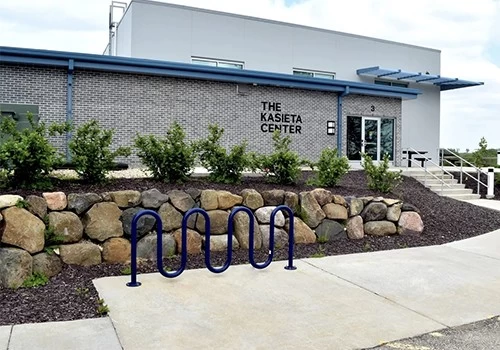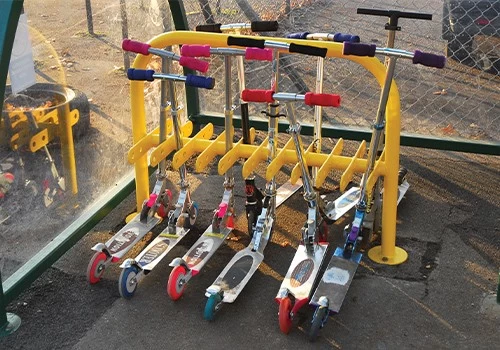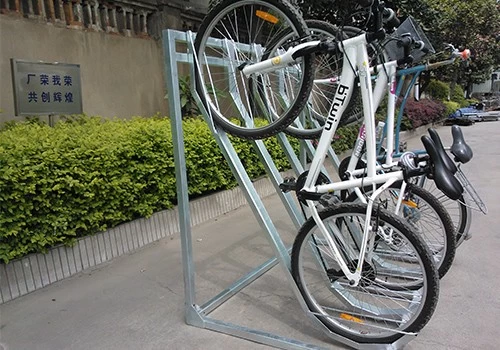Specifications
Model Number : PV-SC-001
Type: Bike parking and storage
Color:Yellow,Black,Green,Red,or Customized.
Style : both indoors and outside
Material : carbon steel
Loading: According to customer need
Size :195*23.2*75cm,200.55*23.2*75cm,or Customized.
Finish: hot-galvanized
Specifications
Model Number : PV-0081-01
Type: Bike parking and storage
Color:silver
Style : both indoors and outside
Material : carbon steel
Loading: According to customer need
Size :Height 1463mm, Depth 1114mm
Finish: hot-galvanized
Model Number : PV-0081-01
Type: Bike parking and storage
Color:Black
Style : both indoors and outside
Material : carbon steel
Loading: 2-10 bikes (According to customer need)
Size :Height 1463mm, Depth 1114mm
Finish: hot-galvanized
Model No.: PV-H1
Size: w605*D400*H330mm
Specification: Round tube:¢16*1.2mm
Finish: Power coated
Net Weight: 1.6 kgs
Packing size:6pcs/ctn
MOQ: 100pcs
Model Number : PV-0024-01
Material : carbon steel/stainless steel
Loading: according customer space size,we can design according the size
Size : W1977*D1130(depend on your parking space)*H2500mm
Finish: Powder coated ,hot-galvanized/electric polish
Packing size :2000*2000*2500mm(40 parking space )
Powder coated ,hot-galvanized/electric polish
Product number:PV-0046-01
Material:carbon steel
Specification:10.2*59*28CM or Customized.
MOQ:100PCS
Port:Shanghai
Trademark:PV
Model Number : PV-0081-01
Type: Outdoor Bike Parking Rack
Style : both indoors and outside
Material : carbon steel
Loading: 2-10 bikes (According to customer need)
Size :170.5*116*148CM
Finish: hot-galvanized
Model Number : PV-0055-01
Type: compact flat pack /slot
Color:black / silver /yellow/optional
Style :Outdoor/indoor
Material : carbon steel/ stainless steel
Capacity : park 6 bikes
Size : L1400*W1054*H840mm
Net weight :38KG
Finish: powder coating / hot galvanized /elctropolishing
Packing size :1490*860*160mm 1pcs/ctn
Product Name: Multi-Capacity Horizontal Two Tier Bike Parking Rack
Material: Carbon Steel
Finish: Powder coated
Post: 80mm * 80mm thickness: 3mm
Steel plate: thickness: 2mm
Dimension: 1325*1890*1830mm
Weight: 370 kg/set
Model: PV-0067-01
Material: stainless steel 304
Pipe: 50 mm* 2.5 mm
Size: 900*700 mm(L*W)
Surface treatment: polishing

The rise of the sharing economy has revolutionized urban mobility. In cities across the globe, shared bikes, electric scooters (e-scooters), and micro-mobility vehicles have become ubiquitous, offering affordable, eco-friendly alternatives to cars and public transit. Yet, this rapid growth has brought with it a pressing challenge: where to park these vehicles. Chaotic, haphazard parking clogs sidewalks, blocks accessibility, and damages urban aesthetics—undermining the very benefits of shared mobility. For bicycle parking rack manufacturers, this challenge is not just a problem to solve, but an opportunity to innovate. Today, the demand is clear: create parking solutions that meet the unique needs of shared fleets, while aligning with the goals of cities, operators, and riders.
Over the past decade, shared mobility has evolved from a niche concept to a mainstream service. In 2023, global shared micro-mobility ridership exceeded 10 billion trips, with e-scooters and bikes accounting for over 70% of that volume, according to the Micro-Mobility Industries Report. Cities like Paris, Seoul, and Mexico City now host tens of thousands of shared vehicles, each requiring a designated space to avoid becoming a public nuisance.
The paradox is stark: shared mobility aims to reduce congestion and improve livability, but unmanaged parking does the opposite. Videos of e-scooters strewn across sidewalks, bikes chained to street signs, or clusters of vehicles blocking wheelchair ramps have become viral symbols of this issue. A 2024 survey by the Urban Mobility Forum found that 68% of city residents cite "disorganized parking of shared vehicles" as their top complaint about micro-mobility services. For operators, this chaos translates to higher costs: teams of workers must be deployed daily to reposition vehicles, while fines from cities for improper parking eat into profits. For cities, it means strained relationships with residents and missed opportunities to integrate shared mobility into broader transit plans.
At the heart of this paradox lies a critical gap: traditional bicycle parking racks were not designed for the scale, diversity, and usage patterns of shared fleets. A standard rack, built to serve a handful of private bikes in a residential area, cannot withstand the demands of 50 shared e-scooters being docked, locked, and removed multiple times a day. Nor can it accommodate the varying sizes and designs of modern micro-mobility vehicles—from foldable bikes to heavy-duty e-scooters with wide bases. To bridge this gap, manufacturers must rethink parking infrastructure from the ground up.

Shared bike and scooter racks have distinct requirements that set them apart from individual users. These needs must drive the design, materials, and functionality of modern parking racks.
First and foremost is scalability
Shared fleets operate in high-density areas—transit hubs, business districts, and university campuses—where dozens of vehicles may need to park at once. A single rack must therefore maximize capacity without sacrificing stability. This means moving beyond the traditional "two-bike" design to modular systems that can be expanded or contracted based on demand. For example, a rack outside a subway station might need to hold 30 vehicles during rush hour, while a smaller installation in a neighborhood park could suffice with 10. Modular designs allow operators and cities to adapt to fluctuating usage patterns.
Second is versatility
Shared fleets are not one-size-fits-all. They include standard bikes, electric bikes (e-bikes), e-scooters, and even cargo bikes for last-mile delivery. Each has unique dimensions: e-scooters, for instance, are narrower than bikes but taller, with a center of gravity that makes them prone to tipping. A parking rack must securely accommodate this diversity. This requires adjustable components—such as variable hook heights, wider bases for scooters, or reinforced arms for heavier e-bikes—that can adapt to different vehicle types without compromising safety.
Third is durability
Shared vehicles are used intensively, with each rack enduring hundreds of daily interactions—docking, locking, and occasional rough handling by riders in a hurry. Racks must withstand not only mechanical stress but also exposure to the elements: rain, snow, salt, and extreme temperatures. Materials matter here. Traditional steel, while strong, is prone to rust in coastal cities or areas with heavy snowfall. Manufacturers are increasingly turning to galvanized steel, aluminum alloys, and even carbon fiber composites to balance strength, weight, and corrosion resistance. Powder-coating finishes add an extra layer of protection, ensuring racks remain functional and visually appealing for years.
Fourth is smart integration
In the digital age, bike parking racks are no longer passive structures—they are part of a connected ecosystem. Operators need real-time data on rack occupancy to optimize vehicle distribution, while cities use this data to plan infrastructure investments. Smart racks, equipped with sensors, can transmit occupancy levels to a central dashboard, alerting operators when a rack is full or when vehicles are parked incorrectly. Some even integrate with rider apps, guiding users to available spots via GPS. For manufacturers, this means embedding technology seamlessly into rack design—without adding excessive cost or complexity. Solar-powered sensors, for example, eliminate the need for hardwiring, making installation easier in historic districts or areas with limited electrical access.

Forward-thinking manufacturers are rising to the challenge, developing racks that address the specific needs of shared fleets while enhancing urban environments. These innovations fall into three key categories: design flexibility, material science, and smart technology.
Design flexibility is perhaps the most visible innovation.
Modular rack systems, for example, allow cities and operators to "build as they grow." A base unit might hold 10 vehicles, with additional sections that can be bolted on to increase capacity by 5 or 10 more. This scalability is crucial for cities where shared mobility adoption is accelerating. Another design trend is "multi-modal" racks, which combine bike and scooter parking in a single structure. These racks feature adjustable hooks—higher for bikes, lower for scooters—and wider platforms to prevent tipping. In Copenhagen, a city renowned for its cycling culture, multi-modal racks outside train stations have reduced sidewalk clutter by 40%, according to a 2024 study by the city’s transportation department.
Material innovation is equally important.
Manufacturers are experimenting with recycled and sustainable materials to align with the eco-friendly ethos of shared mobility. A leading European manufacturer, for instance, now produces racks using 80% recycled steel, with a powder coating made from plant-based resins. These racks meet the same durability standards as traditional models but have a 30% lower carbon footprint. For coastal cities like Miami or Sydney, where saltwater corrosion is a concern, aluminum alloys treated with anti-corrosive chemicals are becoming the norm. These materials are lighter than steel, making installation easier, while offering comparable strength.
Smart technology integration is transforming parking racks from static infrastructure to active assets.
Sensors embedded in racks can detect when a vehicle is docked, track how long it remains, and even identify if it’s parked improperly (e.g., a scooter leaning at an unsafe angle). This data is transmitted to operators via cellular networks, allowing them to dispatch teams to rebalance vehicles or address issues before they escalate. In Berlin, a pilot program using smart racks reduced operator repositioning costs by 25% in its first six months, as teams could target areas with excess vehicles rather than patrolling blindly. For riders, QR codes on racks link to apps that show real-time availability, reducing the frustration of circling blocks in search of a spot.

Parking racks alone cannot solve the shared mobility parking crisis. Success requires collaboration between manufacturers, operators, and cities—a "triple helix" approach that aligns incentives and goals.
Cities, as regulators and planners, play a critical role.
They must update zoning laws and building codes to require adequate parking infrastructure for shared vehicles, particularly in high-traffic areas. In Portland, Oregon, new commercial developments are now mandated to include at least one shared mobility parking zone per 5,000 square feet of floor space. This proactive approach ensures infrastructure keeps pace with demand. Cities can also partner with manufacturers to pilot innovative designs: Barcelona, for example, worked with a local firm to test solar-powered smart racks in 10 neighborhoods, using resident feedback to refine the final product.
Operators, meanwhile, must invest in parking as a core part of their business model, not an afterthought.
This means allocating funds for rack installation and maintenance, as well as educating riders on proper parking etiquette. Some operators now offer incentives—such as discounted rides—for users who dock vehicles in designated racks, a strategy that has increased compliance rates by up to 50% in cities like Toronto. By sharing data on usage patterns with manufacturers, operators can also drive iterative improvements: a surge in e-scooter usage in a district, for example, might prompt a manufacturer to design a rack with more scooter-specific slots.
Manufacturers, for their part, must act as partners, not just suppliers.
This means engaging with cities and operators early in the design process to understand local challenges. A rack that works in a compact European city like Amsterdam, with narrow sidewalks, may not be suitable for a sprawling U.S. city like Los Angeles, where parking needs to accommodate larger vehicles and more spread-out transit hubs. By offering custom solutions—from color-matching racks to historic district aesthetics to designing racks that double as public art—manufacturers can become integral to a city’s urban planning vision.
As shared mobility continues to evolve, so too will the demand for innovative parking solutions. Three trends are poised to shape the future:
First, sustainability will deepen.
As cities strive to meet net-zero goals, parking racks will become part of the circular economy. Manufacturers will increasingly use recycled materials, and racks will be designed for easy disassembly and recycling at the end of their lifecycle. Solar-powered smart features will become standard, reducing reliance on grid electricity.
Second, integration with urban transit will expand.
Racks will no longer be standalone structures but part of "mobility hubs"—centralized locations where riders can switch between shared bikes, e-scooters, buses, and trains. These hubs will feature charging stations for e-vehicles, secure storage, and digital displays showing real-time transit information. Manufacturers will need to design racks that fit seamlessly into these multi-functional spaces.
Third, automation may play a role.
While still in early stages, concepts for automated parking systems for shared vehicles are emerging. Imagine a rack that uses robotics to shuffle vehicles, maximizing capacity in tight spaces, or a system that automatically locks and charges e-scooters when docked. These innovations, while costly, could solve congestion in the most densely populated cities.
The shared mobility revolution has redefined urban transportation, but its success hinges on solving the parking puzzle. For bicycle parking rack manufacturers, this moment presents a unique opportunity to lead—by designing solutions that are scalable, versatile, durable, and smart. By collaborating with cities and operators, manufacturers can do more than sell racks; they can shape the future of urban mobility, creating cities that are cleaner, more accessible, and more livable for everyone.
In the end, the goal is simple: ensure that shared bikes and scooters enhance our cities, rather than clutter them. With the right parking infrastructure, Suzhou Pioneer Vehicle can turn the parking paradox into a parking solution—one rack at a time.